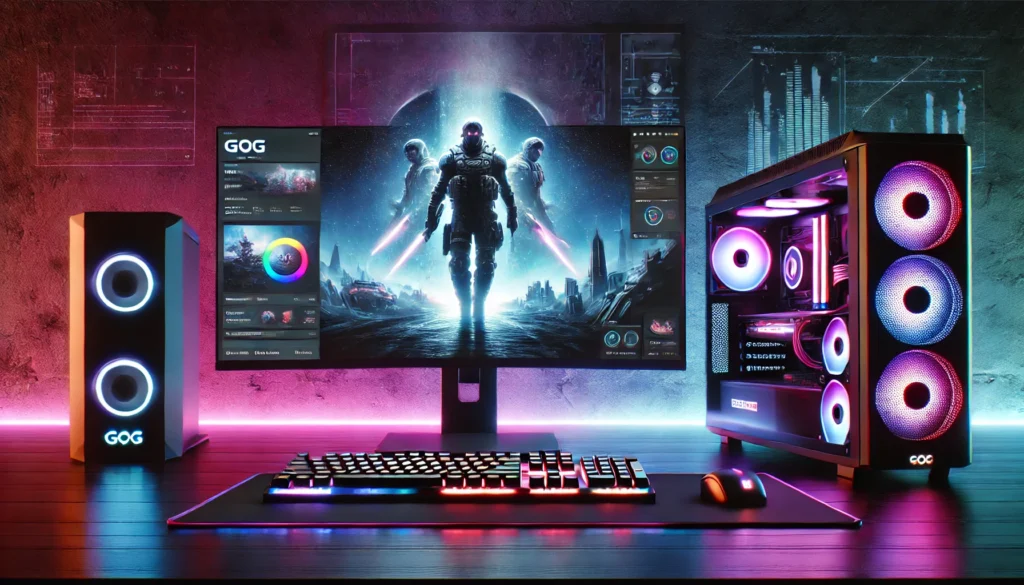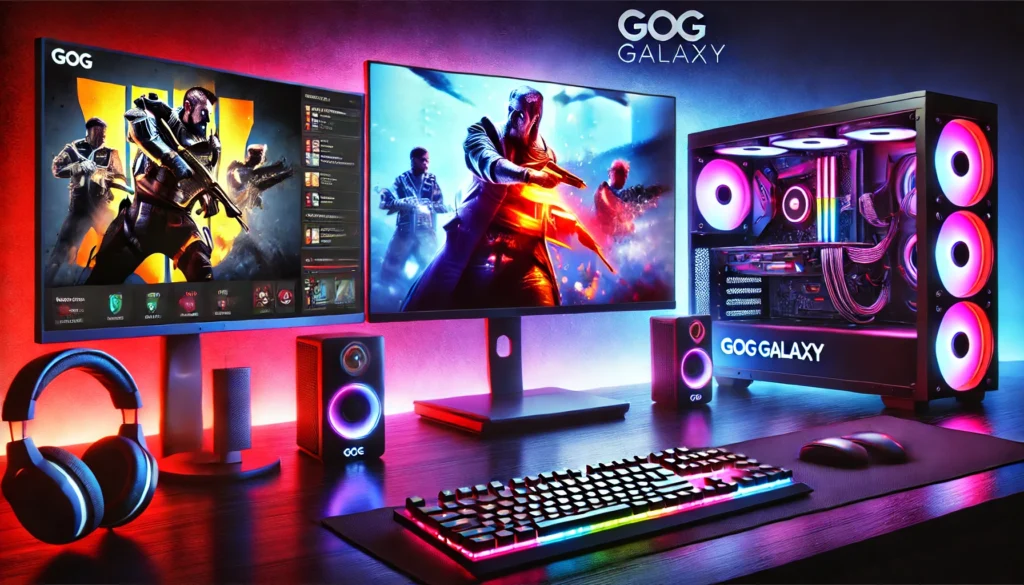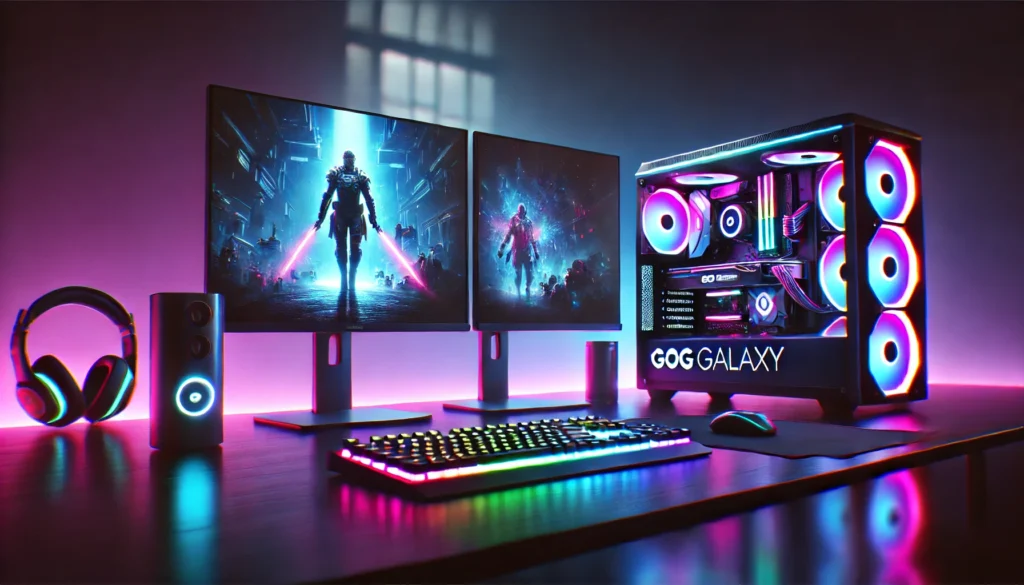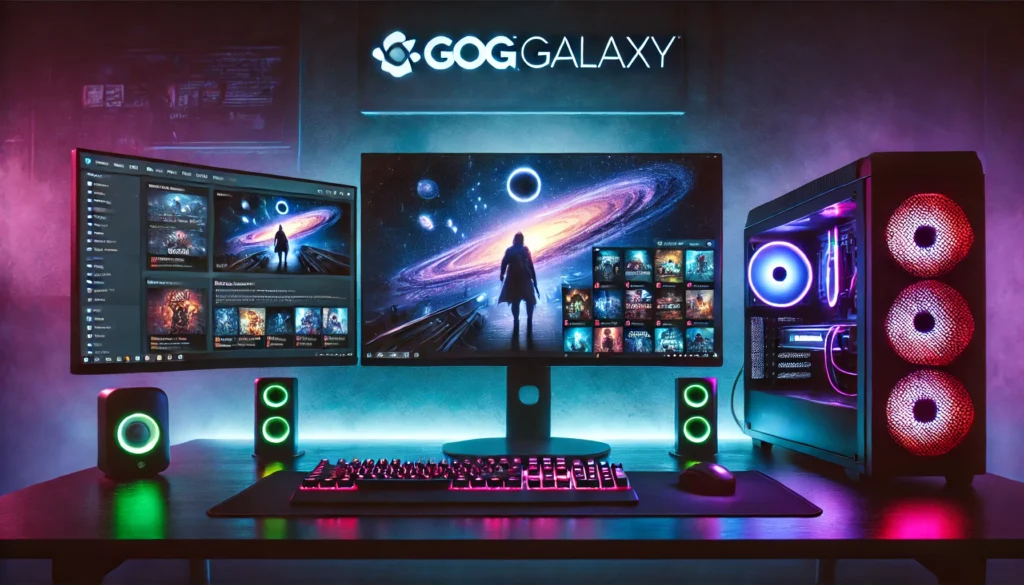Gamers today often seek a multi-monitor setup for enhanced productivity and immersive gameplay experiences. Whether for work, gaming, or streaming, a dual or multi-monitor setup has become increasingly popular.
But if you’re using GOG Galaxy to manage your games, you might face challenges when trying to launch games on your secondary display. In this guide, we’ll walk you through how to configure GOG Galaxy and other settings so you can seamlessly launch and play games on a second monitor.
This guide is packed with practical tips, helping you achieve the optimal gaming experience on the display of your choice.

Table of Contents
Why Use a Secondary Display for Gaming?
Using a secondary monitor for gaming offers several benefits:
- Enhanced Focus: By dedicating your primary monitor to essential apps or tasks, you can isolate your gaming experience on another screen.
- Better Multitasking: Many gamers like to have chat apps, streams, or walkthroughs on one display while gaming on another.
- More Immersive Gameplay: Some games benefit from a distraction-free, dedicated display, making it feel like an even more immersive experience.
While the process of setting up a secondary display for games varies by platform and hardware, GOG Galaxy users will find that this guide is tailored specifically to their needs.

Step 1: Ensure Your Hardware Supports Dual Displays
Before diving into software configurations, confirm that your computer and graphics card support multiple displays. Most modern GPUs and laptops support two or more monitors, but checking your specific setup ensures a smooth experience:
- Check Ports: Ensure your PC has the right video output ports (e.g., HDMI, DisplayPort) for multiple monitors.
- Verify GPU Specs: Refer to your GPU’s specifications on the manufacturer’s website to confirm support for dual displays.
Once confirmed, connect your secondary display to your PC and arrange it through your operating system’s display settings.
Step 2: Configure Display Settings in Windows
Configuring your secondary display in Windows is crucial for a seamless gaming experience. Here’s how to set up your monitor as a secondary display:
- Open Display Settings: Right-click on your desktop and select “Display Settings.”
- Select Monitor Arrangement: Under “Rearrange your displays,” drag and position the secondary monitor based on your physical setup.
- Set Main Display: Select the primary monitor where you want your main interface and windows, leaving the secondary for games. You can change this by selecting “Make this my main display.”
- Adjust Resolution and Scaling: Adjust the resolution for each display if needed for optimal performance.
Step 3: Configure GOG Galaxy to Launch Games on the Secondary Display
With your displays set up, you can now tweak GOG Galaxy and individual game settings to launch on your preferred monitor:
- Check GOG Galaxy Settings: Although GOG Galaxy doesn’t offer a direct setting to specify which monitor to launch games on, it will typically launch games on the display currently marked as your primary in Windows.
- Launch from Secondary Monitor: Open GOG Galaxy on your secondary monitor, then start the game. Sometimes, this will prompt games to launch on the same monitor as GOG Galaxy.
- Game-Specific Settings: Some games offer in-game display settings, allowing you to manually set them to launch on a specific monitor. Check under each game’s graphics or display settings for options.
Step 4: Adjust Settings for Individual Games
For optimal results, configure settings on a game-by-game basis:
- Open In-Game Settings: Most games have a “Display” or “Graphics” section under settings.
- Select Monitor Output: Look for an option to choose which monitor the game should use.
- Test the Settings: Launch the game to verify it opens on the correct monitor. Adjust if necessary.
Step 5: Use Third-Party Tools
If you’re experiencing challenges, several third-party applications can help control which monitor your games launch on:
- DisplayFusion: This app offers custom settings for multi-monitor setups, letting you assign specific games or applications to launch on a chosen display.
- Borderless Gaming: For games without built-in multi-monitor support, Borderless Gaming allows you to run games in borderless window mode and move them between screens freely.
- NVIDIA Control Panel or AMD Radeon Software: Both of these control panels offer options for advanced display configurations, making it easier to assign a specific monitor to your games.
Step 6: Common Issues and Troubleshooting Tips
Even with careful setup, you may run into a few issues:
- Game Reverts to Primary Monitor: If the game switches back to the main display, double-check the in-game settings or re-assign your monitors in Windows.
- Frame Rate Drops: Secondary displays can sometimes impact performance. Lower the resolution on the secondary monitor if this becomes an issue.
- Scaling Issues: Games may appear stretched or compressed on the secondary monitor. Adjust the game’s resolution settings or use borderless mode to correct scaling issues.

Conclusion
Launching games on a secondary display in GOG Galaxy can elevate your gaming experience by providing a dedicated screen for immersive gameplay. With the right configurations, you can customize your multi-monitor setup, fine-tuning it for comfort and performance. By following the steps outlined above, you’ll enjoy the flexibility of gaming on any screen of your choice.
FAQs
1. Can I launch games on a secondary display with GOG Galaxy without changing my primary monitor?
Yes, you can often launch games on a secondary monitor without changing the primary display, but it may require a workaround. One method is to move the GOG Galaxy client to your secondary monitor and start the game from there. Alternatively, some games have in-game display settings that allow you to choose the monitor. If GOG Galaxy defaults to your primary display, consider using a third-party tool like DisplayFusion or Borderless Gaming to assign the game to the secondary monitor without changing the primary setup.
2. Why do some games automatically open on the primary monitor even if I want them on a secondary one?
This is often due to the default settings of the game or how GOG Galaxy interacts with the display configuration in Windows. Many games are designed to launch on the primary monitor unless otherwise specified in the game’s settings. Checking for an in-game option to select the monitor or using third-party software can usually help force the game to open on your desired screen.
3. Does launching games on a secondary display impact performance?
In some cases, yes. Running a game on a secondary display may slightly impact performance, particularly if your GPU is handling multiple high-resolution screens or if the displays have different refresh rates. If you experience frame drops or lag, try lowering the resolution or refresh rate on one of the monitors or close non-essential applications to free up resources. Ensuring your drivers are up-to-date can also help optimize performance.
4. Can I use NVIDIA or AMD settings to control which monitor my games open on?
Yes, both NVIDIA and AMD graphics software offer settings that can help manage multi-monitor configurations. In the NVIDIA Control Panel, you can access “Set up multiple displays” to control monitor arrangement and assign a preferred display. Similarly, AMD’s Radeon Software allows you to customize display settings. However, these settings may not guarantee that all games will open on the selected display, as some games override these preferences and still open on the primary monitor by default.
5. What should I do if a game’s display settings don’t include an option for selecting the monitor?
If the game doesn’t offer an option to choose the monitor, there are a few alternatives:
- Use Borderless Windowed Mode: This mode allows you to drag the game window between monitors easily, giving you flexibility to move it to the secondary display.
- Third-Party Tools: DisplayFusion and Borderless Gaming are popular tools that can force a game to open on a specific display.
- Temporarily Switch Primary Display: As a last resort, you can set your secondary monitor as the primary display in Windows settings temporarily, launch the game, and then switch it back.



